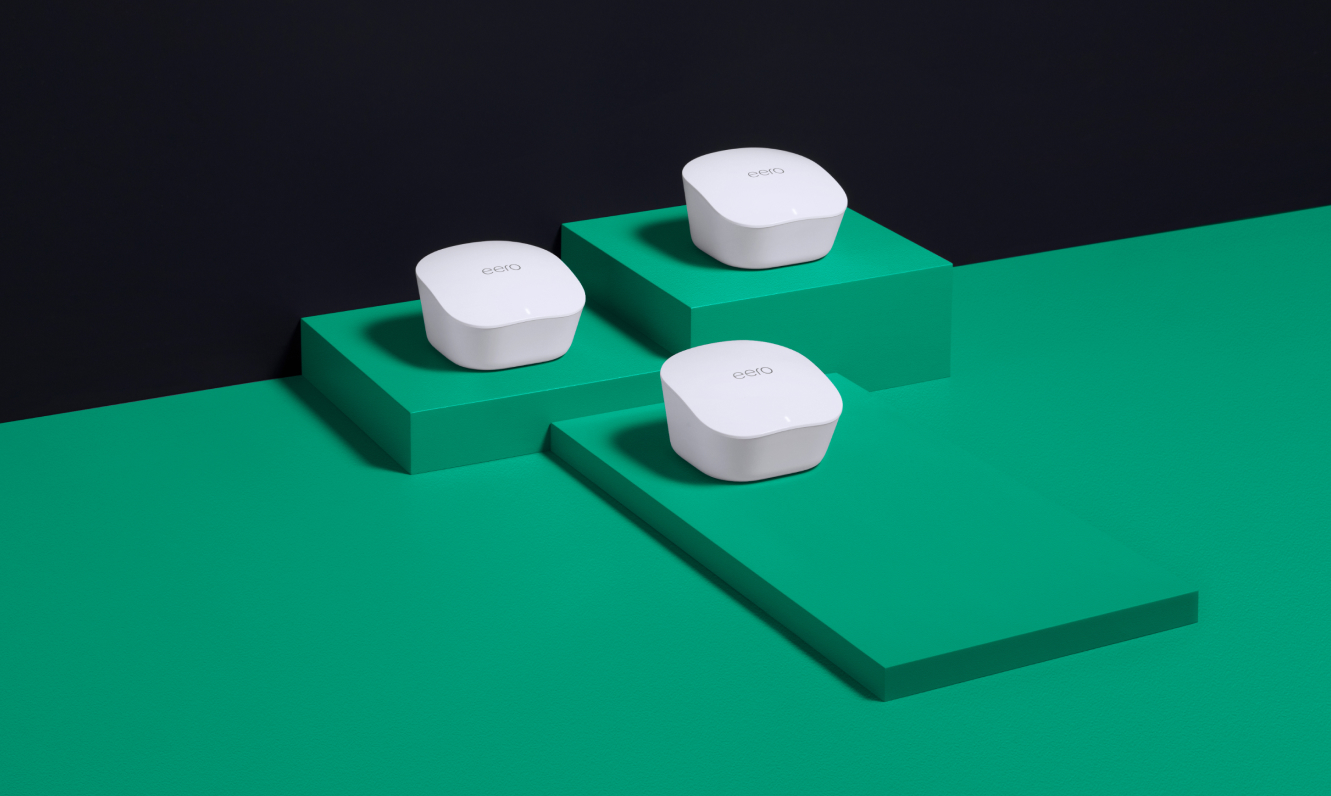Eero 6 vs Eero 6 Plus: Decoding the Key Differences

In today’s world of ever-increasing internet usage and smart devices, reliable and fast Wi-Fi has become a must-have for many households. To keep up with these demands, Amazon has introduced two new mesh Wi-Fi systems: the Eero 6 and Eero 6+. If you’re considering an upgrade to your home network, you might be wondering which of these two options is the best fit for your needs. In this article, we’ll compare the Eero 6 and Eero 6+ to help you make an informed decision.
The Eero 6 is designed for homes with fewer user demands, while the Eero 6+ targets those looking for faster speeds and overall better performance. One key difference between the two models is their maximum speed: the Eero 6 can deliver up to 500 Mbps, whereas the Eero 6+ doubles that for maximum wireless speed. With this information in mind, your choice will depend on your particular needs and the number of devices you have in your home.
Aside from the differences in speed, there are other factors to consider when choosing between the Eero 6 and Eero 6+. For example, the Eero 6+ can support gigabit-plus speeds and over 100 simultaneously connected devices, making it a great option for larger families or households with numerous smart devices. In the end, it’s all about understanding your specific requirements and selecting the right solution to enhance your Wi-Fi experience.
Eero 6 vs Eero 6 Plus Features

Wi-Fi 6 Technology
Both the Eero 6 and Eero 6 Plus support Wi-Fi 6 technology, providing faster and more reliable internet connections. The Eero 6 offers a maximum wireless speed of 500 Mbps, while the Eero 6 Plus doubles that, reaching up to 1 Gbps. They both operate with dual-band connections on 2.4 GHz and 5 GHz frequencies.
Ethernet Ports
Each Eero 6 device comes with two Ethernet ports for wired device connectivity. The Eero 6 Plus also features two Ethernet ports, allowing for wired connections to devices such as gaming consoles or smart TVs.
Mesh Network
Both Eero 6 and 6 Plus support the creation of mesh networks, which means that multiple router units can be combined to extend Wi-Fi coverage across larger areas. The Eero 6 Plus boasts a slightly higher maximum throughput of 3,000 Mbps compared to the Eero 6. The increased capacity of the Eero 6 Plus allows for more devices to be connected and faster speeds.
RAM and USB-C Support
Eero 6 and 6 Plus devices do not offer USB-C connectivity. However, both models support power over USB-C, with the included USB-C power adapter. The exact RAM specifications for Eero 6 and 6 Plus have not been provided.
Additional Features
Eero devices come with parental controls, allowing you to block specific content and manage device access. Both Eero 6 and 6 Plus have Zigbee radio built-in, which enables them to serve as a smart home hub, connecting with various smart devices.
In conclusion, the main differences between Eero 6 and Eero 6 Plus lie in their maximum wireless speeds and throughput capacities. While both routers support Wi-Fi 6 technology and mesh networking, the Eero 6 Plus outperforms the Eero 6 in terms of speed and performance.
Performance and Internet Speed
Speed Tests
The Eero 6 can support speeds up to 900 Mbps and provides coverage of up to 1,500 square feet per device. In comparison, the Eero 6 Plus supports up to gigabit speeds, with a maximum throughput of 3,000 Mbps. For compatible devices like laptops, gaming consoles, or mobile devices, the Eero 6 Plus can achieve average speeds of up to 1730+ Mbps, thanks to its support for 160MHz channel bandwidth. According to CNET’s performance tests, the Eero 6 Plus delivers better results than the Eero 6.
Wireless Connectivity
Both Eero 6 and Eero 6 Plus offer Wi-Fi 6 technology, ensuring faster and more efficient wireless connectivity, as well as better handling of multiple device connections simultaneously. However, the Eero 6 Plus is better equipped for demanding users, with improved maximum throughput and support for 160MHz channel bandwidth.
MU-MIMO and OFDMA
Eero 6 and Eero 6 Plus support MU-MIMO (Multi-User, Multiple Input, Multiple Output) technology, which enables the routers to serve multiple devices at once instead of sequentially. This feature results in a more efficient Wi-Fi experience, particularly when you have multiple devices connected to the network. In addition to MU-MIMO, both devices also support OFDMA (Orthogonal Frequency Division Multiple Access), which is another Wi-Fi 6 feature that significantly improves network efficiency by allowing multiple devices to share the same frequency channels.
Internal Antennas
The Eero 6 and Eero 6 Plus have internal antennas designed to provide optimal Wi-Fi coverage and performance. While both devices offer comparable coverage, the Eero 6 Plus is equipped with faster radio components, which contribute to its ability to support higher Internet speeds and accommodate more simultaneous connections.
Smart Home Compatibility
Interference and Coexistence
Eero 6 and Eero 6 Plus routers are designed to work seamlessly with a wide range of smart home devices, regardless of the wireless networking technology employed. They are built to minimize interference and ensure consistent coexistence among connected devices. Both routers provide excellent wireless performance and support for Amazon’s smart home ecosystem.
Matter Support and Zigbee Hub
Eero 6, Eero 6 Plus, and some other eero routers feature a built-in Zigbee smart home hub, which allows users to connect compatible devices with Alexa for seamless control over lights, locks, plugs, and more. This eliminates the need for separate smart home hubs for each connected device. Furthermore, Eero routers are expected to support Matter, an emerging smart home standard being developed by industry leaders like Apple, Google, Amazon, and the Zigbee Alliance. Matter support will enhance compatibility across different smart home ecosystems, making it easier to build a diverse collection of smart home devices without worrying about compatibility issues.
iOS and Android Compatibility
Setting up and managing your Eero network is a breeze, thanks to the dedicated Eero app available for both iOS and Android devices. The app allows users to monitor their network’s performance, manage connected devices, and receive important updates to ensure their smart home ecosystem is always up-to-date and secure.
| Features | Eero 6 | Eero 6 Plus |
|---|---|---|
| Gigabit Ethernet Ports | Yes | Yes |
| Zigbee Radio | Built-in | Built-in |
| Matter Support | Expected | Expected |
| Compatible with iOS & Android | Yes | Yes |
In summary, both Eero 6 and Eero 6 Plus offer a high level of smart home compatibility. With built-in Zigbee hubs, expected Matter support, and easy management via iOS and Android apps, they provide a solid foundation for users looking to build their smart home ecosystem with minimal interference and maximum flexibility.
Alternative Mesh Routers
This section will explore other mesh routers such as Eero Pro 6 and Eero Pro 6E, TP-Link Deco W7200.
Eero Pro 6 and Eero Pro 6E
Eero Pro 6 and Eero Pro 6E are robust upgrades to the Eero mesh router series. These two routers cater to households with more demanding networking requirements, and they also boast Wi-Fi 6 technology.
The Eero Pro 6 offers the following key features:
- Tri-band design
- Speeds up to 1,000 Mbps
- Coverage up to 2,000 sq ft per node
- 2 Ethernet ports per node
On the other hand, the more advanced Eero Pro 6E adds support for the Wi-Fi 6E standard. This provides additional spectrum in the 6 GHz band, which can improve speeds and reduce congestion. Main features of the Eero Pro 6E:
- Wi-Fi 6E support
- Speeds up to 2,000 Mbps
- Coverage up to 2,000 sq ft per node
- 2 Ethernet ports per node
TP-Link Deco W7200
The TP-Link Deco W7200 is another great alternative when considering mesh routers. This system also supports Wi-Fi 6 technology and offers various features that address home networking needs.
Highlights of the TP-Link Deco W7200:
- Dual-band design
- Speeds up to 1,800 Mbps
- Coverage up to 4,000 sq ft for a 2-pack system
- 2 Ethernet ports per node
This router comes with an easy-to-use app, which allows seamless control of your home network, parental controls, and monitoring of connected devices. You can use the Deco W7200 in various configurations, depending on the size and layout of your space.
In summary, when looking for alternatives to Eero 6 and Eero 6 Plus, consider the Eero Pro 6, Eero Pro 6E, and TP-Link Deco W7200 as viable options. Each offers unique features to cater to different requirements and preferences in home networking solutions.
Design and Build
Weight and Dimensions
The Eero 6 and Eero 6 Plus both feature a simple, inoffensive design with a compact form factor. They are easy to fit into any home environment, and their low-profile allows them to blend seamlessly with your other devices. Here’s a comparison of their weight and dimensions:
- Eero 6: Weighs 0.64 lbs (290g) and measures 3.91 x 3.82 x 2.42 inches (99 x 97 x 61 mm).
- Eero 6 Plus: Weighs 0.68 lbs (308g) and measures 3.91 x 3.82 x 2.42 inches (99 x 97 x 61 mm).
As you can see, there’s not a significant difference in size and weight between the two models, making both of them equally suitable for any room or setup.
Internal Components
The main differences between the Eero 6 and Eero 6 Plus lie in their internal components and capabilities, which affect their performance.
- Gigabit Connection: The Eero 6 supports maximum wireless speeds of up to 500 Mbps, while the Eero 6 Plus doubles that, offering max wireless speeds of 1 Gbps for those who need a gigabit connection.
- Internal Build: The Eero 6 Plus has a more powerful AX3000 build compared to the AX1800 in the first-gen Eero 6, providing better performance and capacity.
- Interference: Both devices support Wi-Fi 6 technology, which helps reduce interference and improve overall network performance.
- USB Ports: Neither the Eero 6 nor the Eero 6 Plus offer USB ports for connecting external devices or storage.
- Extenders: Both models support the use of extenders when setting up a mesh network, enabling you to cover a larger area and improve the overall Wi-Fi coverage in your home.
In summary, the Eero 6 Plus has several advantages over the Eero 6 in terms of internal components and capabilities, such as a gigabit connection and a higher-performing build. However, their weight, dimensions, and design remain largely similar.
Price and Availability
The Eero 6 and Eero 6 Plus are two Wi-Fi mesh router systems that offer different levels of performance and features. As a result, their prices vary, and it’s essential to consider your budget and needs when deciding which system to purchase.
The Eero 6 is typically more affordable than the Eero 6 Plus. This system is designed for smaller homes or apartments, offering Wi-Fi 6 support, speeds up to 500 Mbps, and covers up to 1,500 square feet per device. Prices for the Eero 6 can often be found starting around $129 for a single router and going up to $279 for a three-pack.
On the other hand, the Eero 6 Plus boasts more advanced features and faster speeds. It supports Wi-Fi 6, gigabit speeds, a higher capacity for more devices, and a maximum throughput of 3,000 Mbps. The Eero 6 Plus tends to be priced higher than the Eero 6, typically starting at $199 for a single router and around $499 for a three-pack.
Both Eero 6 and Eero 6 Plus routers are widely available for purchase at popular online retailers, such as Amazon, Best Buy, and the official Eero website. It’s always a good idea to keep an eye out for discounts and bundle deals, as these can often help you save money on your purchase.
Keep in mind that prices may vary depending on the retailer and any ongoing promotions. Additionally, it is essential to regularly check for stock and availability, as popular Wi-Fi devices like the Eero 6 and Eero 6 Plus may occasionally experience limited stock or shipping delays.
In summary, when considering the Eero 6 and Eero 6 Plus for your home network, take into account features, speed, and coverage to make an informed decision based on your budget and networking needs. Always check for up-to-date pricing and availability to ensure you’re getting the best deal possible.
Security and Network Management
This section covers the security and network management features of both Eero 6 and Eero 6 Plus. We’ll take a look at their parental controls, WPA3 encryption, DNS caching, and IPv6 support.
Parental Controls
Eero 6 and Eero 6 Plus both come with built-in parental controls that allow users to manage their family’s internet access. Some of the features include:
- Managing screen time by setting schedules
- Pausing individual devices or the entire network
- Filtering content to block access to specific websites
These features can be easily accessed and managed through the Eero mobile app.
WPA3 Encryption
Both Eero 6 and Eero 6 Plus support WPA3 encryption. WPA3 is the latest and most secure Wi-Fi encryption standard. It improves upon WPA2 by providing:
- Stronger encryption
- Better protection against password guessing attacks
- Enhanced security for Internet of Things (IoT) devices
DNS Caching
Eero 6 and Eero 6 Plus have built-in DNS caching, which can improve your Wi-Fi speed by:
- Reducing latency in loading web pages
- Lowering network congestion
- Speeding up domain name resolution
DNS caching stores the resolved domain names temporarily so that the network doesn’t need to look up the IP address each time a user visits the same website.
IPv6 Support
Both Eero 6 and Eero 6 Plus offer support for IPv6, the most recent version of the Internet Protocol. By supporting IPv6, these devices are more future-proof since they can handle a larger number of IP addresses. This is especially important as the number of IoT devices continues to grow.
In conclusion, Eero 6 and Eero 6 Plus provide comprehensive security and network management features, including parental controls, WPA3 encryption, DNS caching, and IPv6 support. By offering these capabilities, users can have a reliable, secure, and efficient home network.






